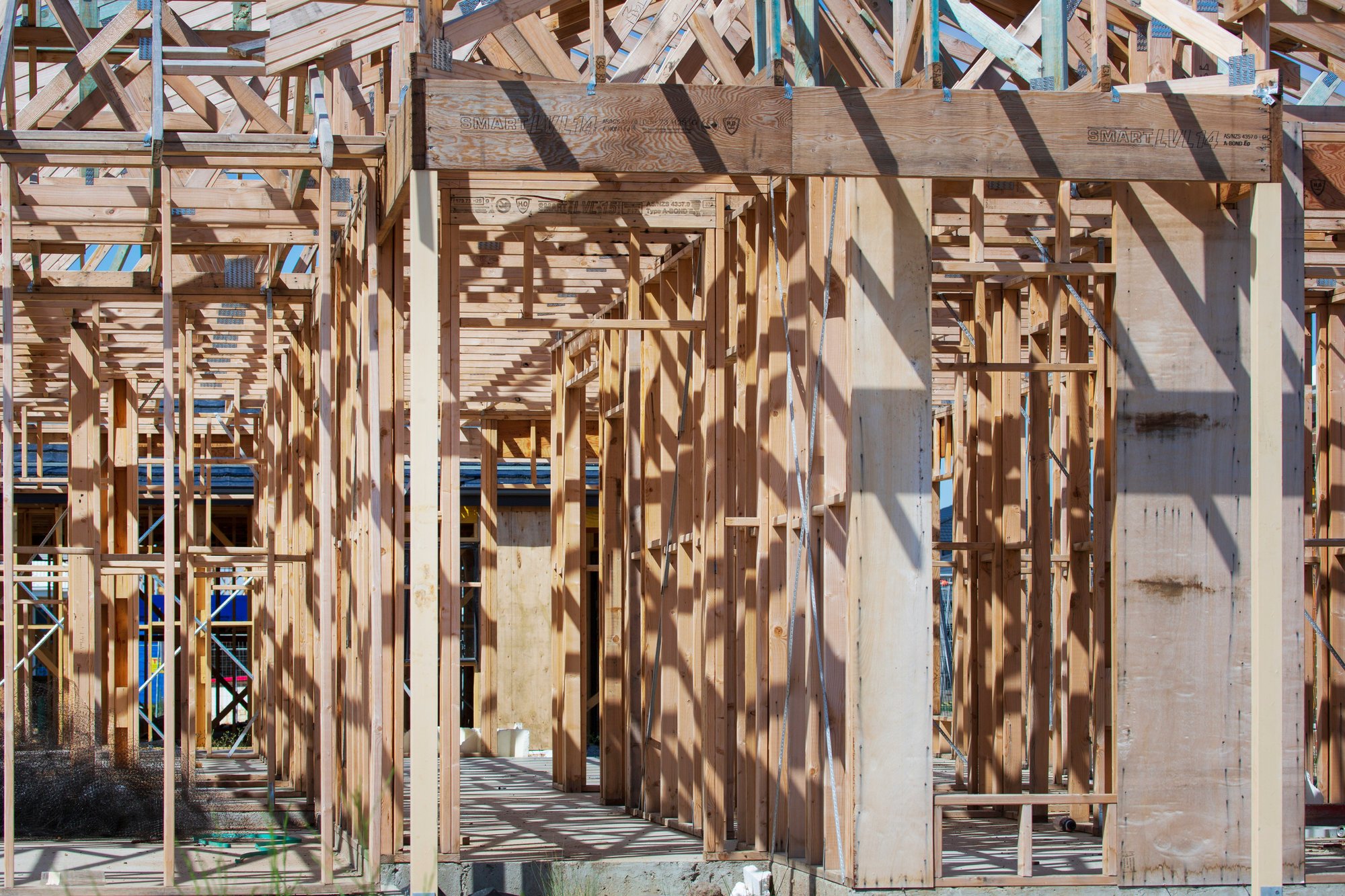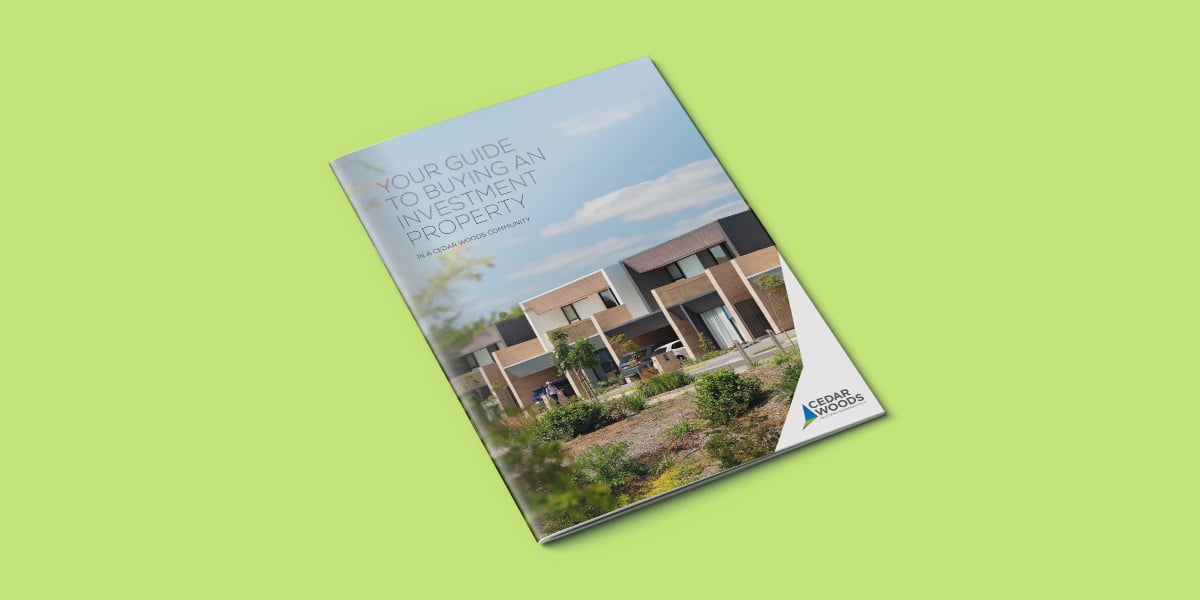Written by
Sep 22, 2023 8:45:00 AM
Looking for more investor content? Visit our Resource Hub

Australians love investing in property, and for good reason. It can provide savvy savers with the trifecta of rental income and tax savings, alongside potential capital gains over the long term. And chances are, if you’re looking to add an investment property to your portfolio, the idea of purchasing a new build has made its way onto your radar. Property investment of any sort is a big step, so it pays to be informed about the pros and cons of the options available and, most importantly, understand how the numbers stack up.
Whether you’re looking at townhouses, apartments or family homes, there are plenty of choices when it comes to the types of new properties available to invest in. The kind of home you choose as an investment will come largely down to your available budget and long-term goals, but let’s look at how new builds compare to existing properties from an investment point of view.
The benefits of new builds
Stamp duty savings
Stamp duty savings are one of the benefits of choosing the house and land package route. Since the home doesn’t exist yet, you’ll only pay stamp duty on the land. To learn more about off-the-plan duty concession in Victoria, visit the State Revenue Office Victoria's website.
Save on maintenance
As everything is brand new and covered by warranty, it's highly unlikely that you’ll have to budget for costly repairs on your investment property.
They're appealing to tenants
Depending on location, you may be able to set higher rental fees for a new home, particularly compared to well-worn rentals in neighbouring areas.
It’s rental-ready
New builds are constructed to current building code requirements, meaning things like insulation and ventilation standards are adhered to. Make sure you’re aware of the minimum rental standards that apply in your state.
Tax benefits
The ability to claim depreciation on the cost of a new build (and any fittings) has great appeal for investors. It’s best to speak to a property accountant about the intricacies of depreciation against new builds.
Why investing in apartments and townhouses are popular for investors
The dream of a quarter-acre block has shifted as Australians become more accustomed and primed to the benefits of apartment and townhouse living. In fact, according to the Australian Bureau of Statistics, over the past 25 years, the number of occupied apartments in Australia has increased by 78%. As a result of this shift, apartments have become a popular addition to existing property portfolios and for first-time investors. Here’s why:
Affordability
Compared to a traditional detached home, apartments and townhouses are often more affordable – you’ll secure a rental property for a lower cost than a stand-alone home which is great for established and first-time investors.
Little to no maintenance
In apartments, body corporates take care of property maintenance which is a major benefit compared to maintaining a stand-alone property yourself.
Fewer security woes
With less accessible (and controlled) entry points, security cameras, fire protection and more people around, apartments generally have fewer security issues.
Rental demand
Typically located in established suburbs, tenants will benefit from having amenities and infrastructure on their doorstep.
Investment property deposits
Funding an investment property is different to buying a home you’re going to live in, particularly if it’s an addition to an existing portfolio – where it’s unlikely you’ll have a 20% deposit in savings. So how else can you pull together a deposit?
Use equity in lieu of cash
If you already own a home or another investment property, check with your lender about accessing this equity for use as a deposit.
Take out a low deposit loan
While 20% is the golden number for deposits, many lenders will accept far less. It’s possible to borrow up to 95% of a property’s value, but you’ll most likely need to pay Lenders Mortgage Insurance (LMI), which places a premium on your loan.
Find a guarantor
A guarantor is someone who agrees to be back up for another person’s debt. Your guarantor will need sufficient home equity or capital to cover the loan, and no cash will need to change hands.
A note on deposits for a new build purchased off plan - in some instances, the deposit you need to pay a developer for purchasing a new build off the plan may be less than what’s required for an established dwelling – which may give you additional time to secure funds during the construction phase. This is naturally a plus when it comes to financing your investment. However, be sure to check with your lender what they require as loan deposits can range between 5 - 20%.
Making sure the numbers stack up
When considering purchasing an investment property, it’s essential to understand how the numbers stack up – there’s a lot more to it than just securing a property at a great price. You need to look at all the costs involved (beyond the obvious purchase price) and how these compare to the income you will make from rent (rental yield), capital gain or a combination of the two. We recommend getting advice from your account or financial advisor on the number crunching.
Here are some costs you may need to factor into the equation:
- Upfront costs
- Stamp duty –this varies between states and territories but can be as high as 6%.
- Legal and conveyancing – preparing contracts, mortgage, and other legal documents.
- Lenders Mortgage Insurance (LMI) –applicable if you are taking out a low deposit loan.
- Ongoing costs
- Property management fees
- Insurance
- Rates
- Body corporate fees (depending on property type)
- Maintenance
- Accountant fees
- Loan repayments
A closer look at rental yield
Rental yield is the annual revenue generated by your investment property. This is usually looked at as a net yield figure – the amount of take-home revenue after all costs of owning the property have been accounted for. Learn exactly why master-planned communities are winning over investors here.
Doing yield calculations and being familiar with these numbers is a vital part of your investment strategy. Often, you’ll have to weigh up yield over capital gain, and the costs associated with that. Both are legitimate investment strategies, but don’t necessarily go hand in hand. This is where it’s important to talk to your financial advisor or a property broker to ensure you have the right strategy to meet your property investment goals.
Partnering with a trusted developer
Whether you’re creating a nest egg for the future or striving for financial freedom, by partnering with a trusted developer, you’ll have all the assurances that come along with over 30 years of experience. Cedar Woods properties offer investors access to desirable locations and options across a range of budgets, yields and build timeframes. With a proven track record of creating flourishing, desirable communities, Cedar Woods takes the guesswork out of your new build investment property.
*Disclaimer: The information used in this document is indicative only and may not represent the final detail or accurately represent personal circumstances of each person. Cedar Woods gives no warranty concerning the accuracy of the material or information displayed in this blog. Prospective buyers should make their own enquiries and rely on their own investigations and independent advice. All information in this blog is subject to Terms of Use accessible at www.cedarwoods.com.au/Terms-of-Use.





